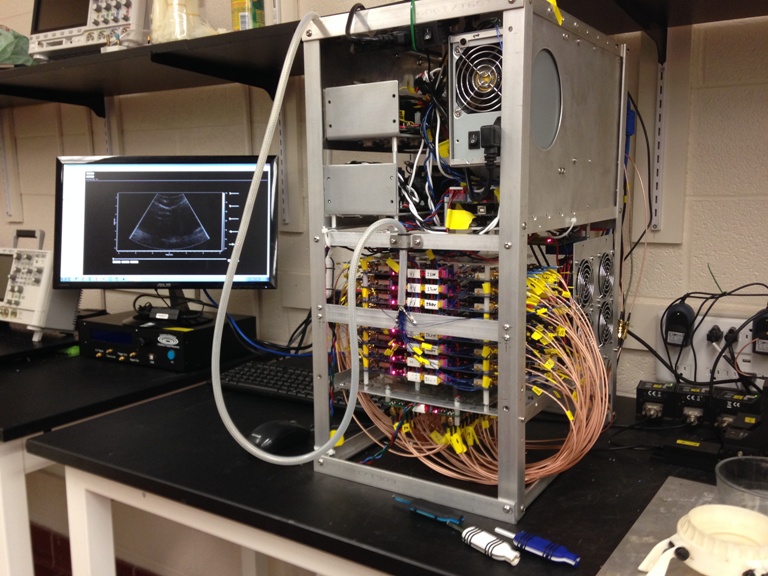HALIFAX – It’s a device that can fit in the palm of your hand, but Dalhousie University researchers hope it will do big things to help doctors treating patients with hearing loss.

Rob Adamson, an assistant professor in the School of Biomedical Engineering, and Jeremy Brown, an assistant professor in the School of Biomedical Engineering, along with Dr. Manohar Bance are the brains behind the world’s first ultrasound imaging ear probe.
Right now doctors either use a CT scanner, MRI machine or have to do surgery on patients with conductive hearing loss, which is when sound cannot travel into the inner ear, to help treat them. But the engineers say the options leave a lot to be desired.
So the pair set out to create an alternative: a device smaller than a clunky CT or MRI machine but with enough resolution to give doctors an in-depth look into the middle and inner ear.
Two years and millions of dollars later, the engineers have created a tool that could revolutionize how doctors see inside the ear, diagnose and treat patients with conductive hearing loss.
“We’ve been developing two new technologies: high frequency ultrasound and optical coherence technology, as means of visualizing things that are inside the ear,” Adamson said.
“It has a resolution about 10 times higher than conventional imaging modalities like MRI or CT scan. It uses high frequently ultrasound to generate these images,” said Brown.
And with a size just larger than a car key, researchers say the ear probe will be more convenient for doctors to use.
“What that allows you to do is see things that are ten times smaller. That turns out to be exactly what you need to be able to see the structures inside the ear,” he said.
“We’re the first people in the world to actually successfully bring a probe with such resolution into such a small package,” Brown said.
Adamson said researchers plan to fine-tune the device then conduct clinical trials within a year. They hope to start selling the ear probe within five years. Funding for the project was provided through the Atlantic Canada Opportunities Agency and other grants.
- Naloxone-resistant street drug linked to 9 deaths in Eastern Canada seized in Alberta
- ‘She gets to be 10’: Ontario child’s heart donated to girl the same age
- Buzz kill? Gen Z less interested in coffee than older Canadians, survey shows
- Bird flu risk to humans an ‘enormous concern,’ WHO says. Here’s what to know




Comments